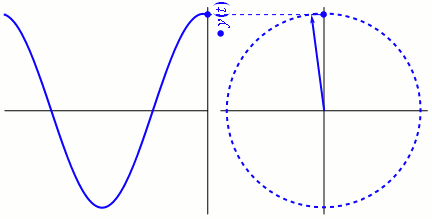class: center, middle # EE-281 # Sinusoids & Phasors ## Ozan Keysan [ozan.keysan.me](http://ozan.keysan.me) Office: C-113 <span class="meta">•</span> Tel: 210 7586 --- # Where's the Energy Coming From? -- ## Generation --> Transmission --> Distribution <img src="https://raw.githubusercontent.com/ozank/ee361/master/images/electric_grid.png" alt="Drawing" style="width: 800px;"/> --- <img src="https://raw.githubusercontent.com/ozank/ee361/master/images/turkiye_elektrik_iletim.png" alt="Drawing" style="width: 800px;"/> --- # Electric System of Turkey -- ## Capacity: 61.2 GW -- ## Max. Consumption: 40 GW (~20 million kettles) -- ## Per Capita Consumption: 2850 kWh/year -- (1/5th of USA) --- # Why do we need AC? -- ### [War of Currents](http://en.wikipedia.org/wiki/War_of_Currents) <img src="http://img.memecdn.com/thunderstruck_o_2855333.jpg" alt="Drawing" style="width: 650px;"/> --- # AC Transmission Lines <img src="http://i.huffpost.com/gen/1682046/thumbs/o-HIGH-VOLTAGE-TRANSMISSION-LINE-facebook.jpg" alt="Drawing" style="width: 800px;"/> --- #Transformers <img src="http://3.bp.blogspot.com/-O5o0GzNoPNo/ThRSwkgVexI/AAAAAAAABu8/Fv88ZNaIEOY/s1600/222088_206340936072588_170822346291114_561188_4705333_n.jpg" alt="Drawing" style="width: 600px;"/> A three-phase 225 MVA, 275 kV power transformer, which weights 241 tonnes (Courtesy of Scottish Hydro) --- # Direct-Current Grid ### - The voltage cannot increased (without power electronics). ### - Low-voltage transmission is inefficient ### - Transformers don't work with DC -- # Alternating-Current Grid ### - Transformers can be used to step-up voltage ### - Thinner/Cheaper transmission cables ### - Energy can be transferred to long distances --- # Not only in Power Engineering ## Sinusoids in: ### - Nature: Waves, Motion... -- ### - Mechanical Engineering: Vibration, [Natural frequency](http://www.youtube.com/watch?v=j-zczJXSxnw) -- ### Computer Science: File Compression, Image Processing, [Fourier Transform](http://jackschaedler.github.io/circles-sines-signals/dft_introduction.html) ([mp3](http://nautil.us/blog/the-math-trick-behind-mp3s-jpegs-and-homer-simpsons-face), [jpeg](http://david.li/filtering/)) [homer](https://www.youtube.com/watch?v=QVuU2YCwHjw&feature=youtu.be&t=1m) --- # Sinusoid ## Sinusoid: Signal that has the form of the sine or cosine function. ## \\( V(t) = V\_m sin (\omega t) \\) #### or ## \\( V(t) = V\_m cos (\omega t) \\) --- # \\( V(t) = V\_m sin (\omega t) \\) - ## \\( V\_m \\) : Amplitude - ## \\( \omega\\) : Angular velocity (radians/second) - ## \\( t \\) : Time (seconds) --- # \\( V(t) = V\_m sin (\omega t) \\) ## \\(f\\): Frequency in Hertz (Hz) -- ## \\(\omega = 2 \pi f\\): Frequency radians/s -- ## \\(T\\): Period (seconds) ## \\(T = \dfrac{1}{f} = \dfrac{2\pi}{\omega}\\) --- # Phase Difference: \\( V(t) = V\_m sin (\omega t + \phi) \\) -- ## \\(\phi\\): Phase (radians) <img src="https://raw.githubusercontent.com/ozank/ee281/master/images/phase_difference.png" alt="Drawing" style="width: 500px;"/> --- # Phase Difference ### \\(sin(\omega t \pm \pi) = \\) -- \\( - sin(\omega t)\\) -- ### \\(cos(\omega t \pm \pi)\ =\\) -- \\( - cos(\omega t)\\) -- ### \\(sin(\omega t \pm \pi/2) = \\) -- \\(\pm cos(\omega t)\\) -- ### \\(cos(\omega t \pm \pi/2) = \\) -- \\( \mp sin(\omega t)\\) --- # Phase Difference <img src="https://raw.githubusercontent.com/ozank/ee281/master/images/phase_rotate_a.png" alt="Drawing" style="width: 350px;"/><img src="https://raw.githubusercontent.com/ozank/ee281/master/images/phase_rotate_b.png" alt="Drawing" style="width: 350px;"/> --- #Sinusoid Operations ## \\(3 cos (\omega t) - 4 sin (\omega t) = ?\\) -- ## \\(A cos (\omega t) + B sin (\omega t + \phi) = ?\\) ### [Graphical representation](https://docs.google.com/spreadsheets/d/1Kdm0kixL6wKhGP5Zfe-r_ukD5cu7suq9UgxDRV96atM/edit?usp=sharing) --- # Vector Representation <img src="https://raw.githubusercontent.com/ozank/ee281/master/images/sinusoid_phasor.png" alt="Drawing" style="width: 600px;"/> ### [Graphical representation](https://docs.google.com/spreadsheets/d/1Kdm0kixL6wKhGP5Zfe-r_ukD5cu7suq9UgxDRV96atM/edit?usp=sharing) --- #Sinusoid Operations ## \\(3 cos (\omega t) - 4 sin (\omega t) =\\) ##\\( 5 cos(\omega t + 53.1^o)\\) ### [Graphical representation](https://docs.google.com/spreadsheets/d/1Kdm0kixL6wKhGP5Zfe-r_ukD5cu7suq9UgxDRV96atM/edit?usp=sharing) --- #Examples ## Find amplitude, phase, period an frequency: ## \\(v(t) = 12 cos (50t + \pi/3)\\) -- ## Represent AC grid voltage as sinusoid --- #Examples ## Represent following sinusoids in vector diagram: ### \\(-10 cos (\omega t +50^o)\\) ### \\(12 sin (\omega t -10^o)\\) --- #Examples ### Calculate: ### \\(Vcos(wt)-Vcos(wt-2\pi/3)\\) --- #Phasors ## Phasor: a complex number that represents the amplitude and phase of a sinusoid -- ## \\(z = x + j y\\) ###where \\(j = \sqrt{-1}\\) --- # Complex Numbers ## \\(j = \sqrt{-1}\\) or better as: \\(j^2 = -1\\) <img src="http://betterexplained.com/wp-content/uploads/complex/negative_imaginary_table.png" alt="Drawing" style="width: 600px;"/> [Better explained: complex numbers](http://betterexplained.com/articles/a-visual-intuitive-guide-to-imaginary-numbers/) --- #Phasors ## In polar form ##\\(z = x + j y = r \angle \phi\\) -- ##where ##\\(r = \sqrt{x^2 + y^2}\\) ## \\(\phi = tan^{-1}(\dfrac{y}{x})\\) --- #Phasors ## In polar form ##\\(z = x + j y = r \angle \phi\\) ###or ##\\(z = r ( cos (\phi) + j sin (\phi)) \\) --- # Phasor Operations ## Addition ## \\(z\_1 + z\_2 = (x_1 +x_2) + j(y_1+y_2)\\) -- ## Substraction ## \\(z\_1 - z\_2 = (x_1 - x_2) + j(y_1 - y_2)\\) --- #Phasor Operations ## Multiplication ### \\(z\_1 z\_2 = x_1 x_2 + j x_1 y_2 + j y_1 x_2 - y_1 y_2\\) -- ## or simply ## \\(z_1z_2 = r_1 r_2 \angle (\phi_1 + \phi_2)\\) --- # Phasors ## In exponential form: ## \\(z = x + j y = r e^ {j\phi}\\) -- ## Euler's formula: ## \\(e^{jx}=cos (x) + j sin(x)\\) --- ## Euler's identity: \\(e^{j \pi} +1 =0 \\) <img src="http://imgs.xkcd.com/comics/e_to_the_pi_times_i.png" alt="Drawing" style="width: 300px;"/> #### "The most remarkable equation in mathematics", Richard Feynman #### [more info](http://en.wikipedia.org/wiki/Euler%27s_formula), [video explanation](http://www.youtube.com/watch?v=mgNtPOgFje0), [proof](https://docs.google.com/presentation/d/1oMNjkDp-LieSGnZEwNpceG8KTIvbnus9olu3KqnM5bg/present#slide=id.i0), [proof2](http://www.integralworld.net/collins30.html), [Euler's formula](http://betterexplained.com/articles/a-visual-intuitive-guide-to-imaginary-numbers/), [better explained](http://betterexplained.com/articles/intuitive-understanding-of-eulers-formula/) --- # Phasors ##\\(e^{j\phi}=cos (\phi) + j sin(\phi)\\) ##Thus: -- ## \\(cos(\phi)=Re(e^{j\phi})\\) ## \\(sin(\phi)=Im(e^{j\phi})\\) --- # Phasors ## Time domain: ## \\(v(t)=V_m cos (wt + \phi)\\) -- ## Phasor domain: ## \\(\mathrm{V} =V_m \angle \phi\\) --- # Phasors ## Time domain: ## \\(v(t)=V_m sin (wt + \phi)\\) -- ## Phasor domain: ## \\(\mathrm{V} =V_m \angle \phi - 90^o\\) --- #Phasors  #### [Animation](http://www.animations.physics.unsw.edu.au/jw/phasor-addition.html), [Animation2](http://en.wikipedia.org/wiki/Phasor) --- #Phasor Domain ## Derivation ## \\(v(t)=V_m cos (wt + \phi)\\) -- ## \\(\dfrac{d v(t)}{dt}=?\\) -- ## In Phasor domain: \\(j \omega \mathrm{V}\\) --- #Phasor Domain ## Derivation: \\(j \omega \mathrm{V}\\) ## Integration: \\(\dfrac{\mathrm{V}}{jw}\\) --- #Examples ## Evaluate the following: ## \\((5+j2)(-1+j4)-5\angle 60^o\\) --- #Examples ## Transform sinusoid to phasor ## \\(i = 6 cos (50t - 40^o)\\) ## \\(v = -4 sin(30t + 50^o)\\) --- #Examples ## Find the sinusoid ## \\(\mathrm{I} = -3 + j4\quad A\\) ## \\(\mathrm{V_1} = 8e^{-j20^o}\quad V\\) ## \\(\mathrm{V_2} = j 8e^{-j20^o}\quad V\\) --- #Examples #Calculate \\(i_1 + i_2\\) ## \\(i_1 = 4 cos (wt + 30^o)\\) ## \\(i_2 = 5 sin (wt - 30^o)\\) --- #Examples #Calculate the following equation using phasors ###\\(4i + 8 \int i dt - 3 \dfrac{di}{dt} = 50 cos (2t + 75^o)\\) --- # Any questions? ## You can download this presentation from: [keysan.me/ee281](http://keysan.me/ee281)